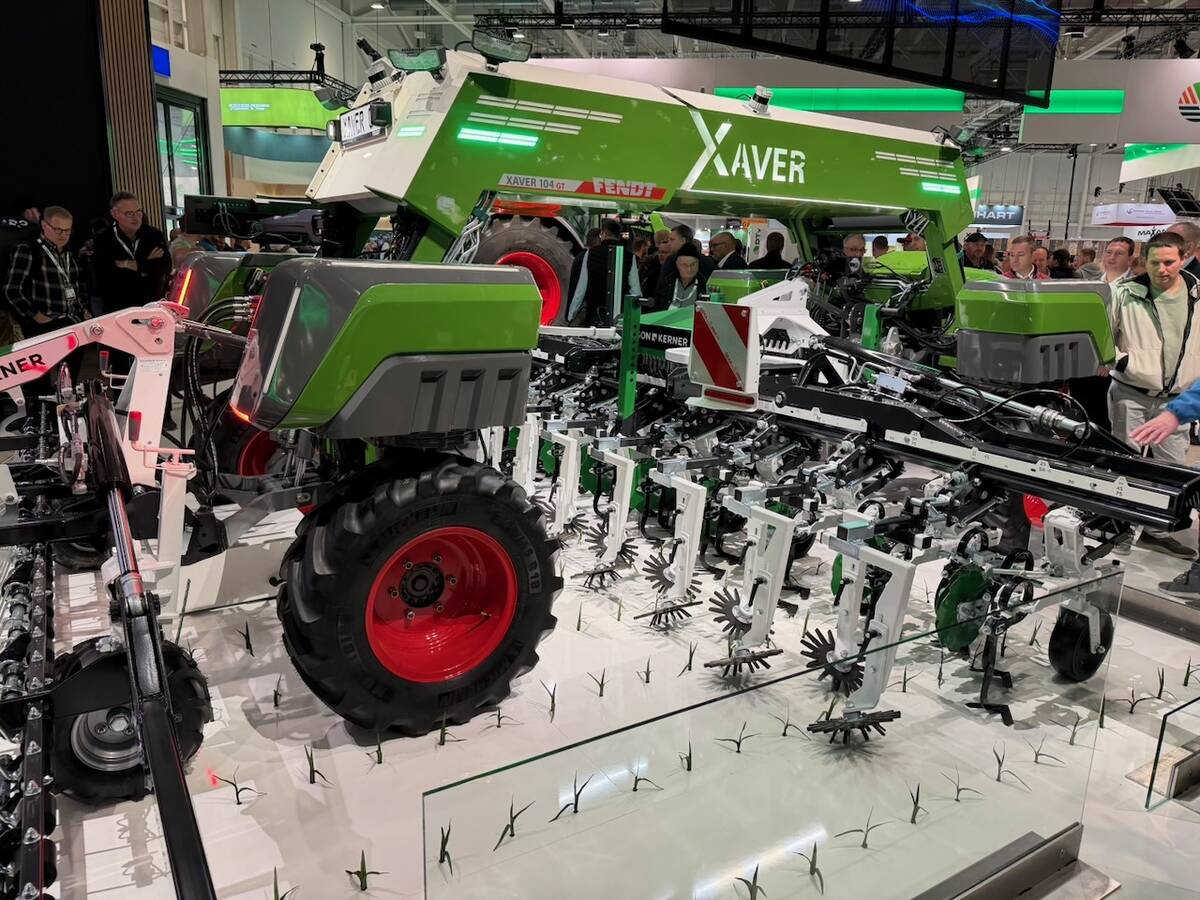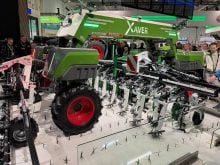The storks were busy in 1923, delivering not only a bouncing baby Western Producer, but also a new generation of all-purpose farm tractors.
The Farmall from International Harvester and John Deere’s Series D joined Henry Ford’s Fordson to revolutionize the North American farm scene toward a lighter and lower cost tractor.
A post First World War depression had hit agricultural equipment makers in 1920, stalling sales of the existing market leaders, expensive heavyweights such as the IH Titan that weighed in at almost four tonnes.
The big tractors were designed for plowing, but for more precise work such as cultivation and seeding, horses were still the preferred option.
Read Also

VIDEO: Agritechnica Day 4: Robots and more robots, Nexat loves Canada and the trouble with tariffs
Agritechnica Day 4: Robots and more robots, Nexat loves Canada and the trouble with tariffs.
Ford set out to change that. Building on his success with the low cost Model T car, he introduced the Fordson at the end of the war, weighing 1.2 tonnes.
In Canada, the federal government, still operating with the powers of the War Measures Act, decided in 1918 to buy 1,000 Fordsons to sell at cost to prairie farmers to help produce food for the war effort. Ford used the depression that struck in the early 1920s to put his tractor in a dominant position by slashing its price.
The traditional farm equipment makers had to respond to Ford or surrender the tractor field. Luckily, their research and design departments had already been playing with concepts for smaller, more versatile machines.
In 1923 John Deere introduced the Series D, and International Harvester came out with its Farmall, a tricycle design especially popular in row crop farming.
They became immensely popular and by the end of the 1920s had driven the Fordson from the field, although Ford would be back by the end of the 1930s with different models.
In its early days, The Western Producer didn’t have the range of advertising it does today. Farm equipment advertisements were surprisingly rare. But one of the new generation of tractors did promote itself regularly – International Harvester’s McCormick-Deering 15-30, named for its 15 horsepower rating at the drawbar and 30 hp at the belt. McCormick-Deering became the standard for reliability and durability, boasting excellent traction.
“Will you rest content with plodding horseflesh, or will you enter a new era of progressive farming …” asked one McCormick-Deering advertisement.
“Steel horsepower is the drawbar and belt power that operates modern day farms at top efficiency.”
But horses still dominated the Canadian prairie farm scene. There were only 13 tractors per 100 farms in 1921.
A debate raged whether investing in a tractor was worthwhile. Indeed, Grant MacEwan notes in his 1974 book Power for Prairie Plows that horse breeder associations successfully lobbied governments to assist them on trips to Scotland and the United States to buy the best Clydesdale and Percheron stallions available in an attempt to upgrade the draft horse to match the tractor’s power.
But they couldn’t keep up with the tractor and its improvements, such as rubber tires, diesel engines and hydraulic power.
Horses remained a familiar sight on farms for the next 25 years, with the Great Depression and Second World War slowing the inevitable introduction of mechanization. But by 1951, 95 percent of prairie farms had a tractor.
The next progressions in power, features and comfort were experienced by today’s senior farmers.
Now, in the Producer’s 80th anniversary year, tractor makers are again introducing a breakthrough in farm power – self-steering tractors.
The systems use global positioning satellites and computers linked to the tractor’s steering apparatus. The operator needs to touch the steering wheel only when turning at the end of the pass.
The manufacturers say the system improves accuracy, reduces overlap, cuts operator fatigue and allows operators to focus more attention on implement performance. Farmers even have time to do other work in the cab.
But while the technology becomes ever more sophisticated, tractor makers are remembering their roots and appealing to buyers with a sense of nostalgia.
In 2002, the McCormick name returned to tractors in Western Canada thanks to Landini Corp., a European company that bought what had once been an International Harvester tractor plant in Great Britain that produced the McCormick for Europe.
And this year, Case IH announced that the Farmall name, created 80 years ago, is returning. The company will apply the historic tag to its DX series of compact tractors.
Which tractor model made the biggest contribution to your operation during your family’s farming career, and why?
Your replies to this question will form the basis of a feature in The Western Producer’s 80th anniversary special edition Aug. 21, 2003.
Send your replies to Building a Legacy, Western Producer newsroom, Box 2500, Saskatoon, Sask., S7K 2C4. You can also phone in your answers, toll-free, to 800-667-6978 or reply on-line by going to www.producer.com and clicking on Building on a Legacy.














